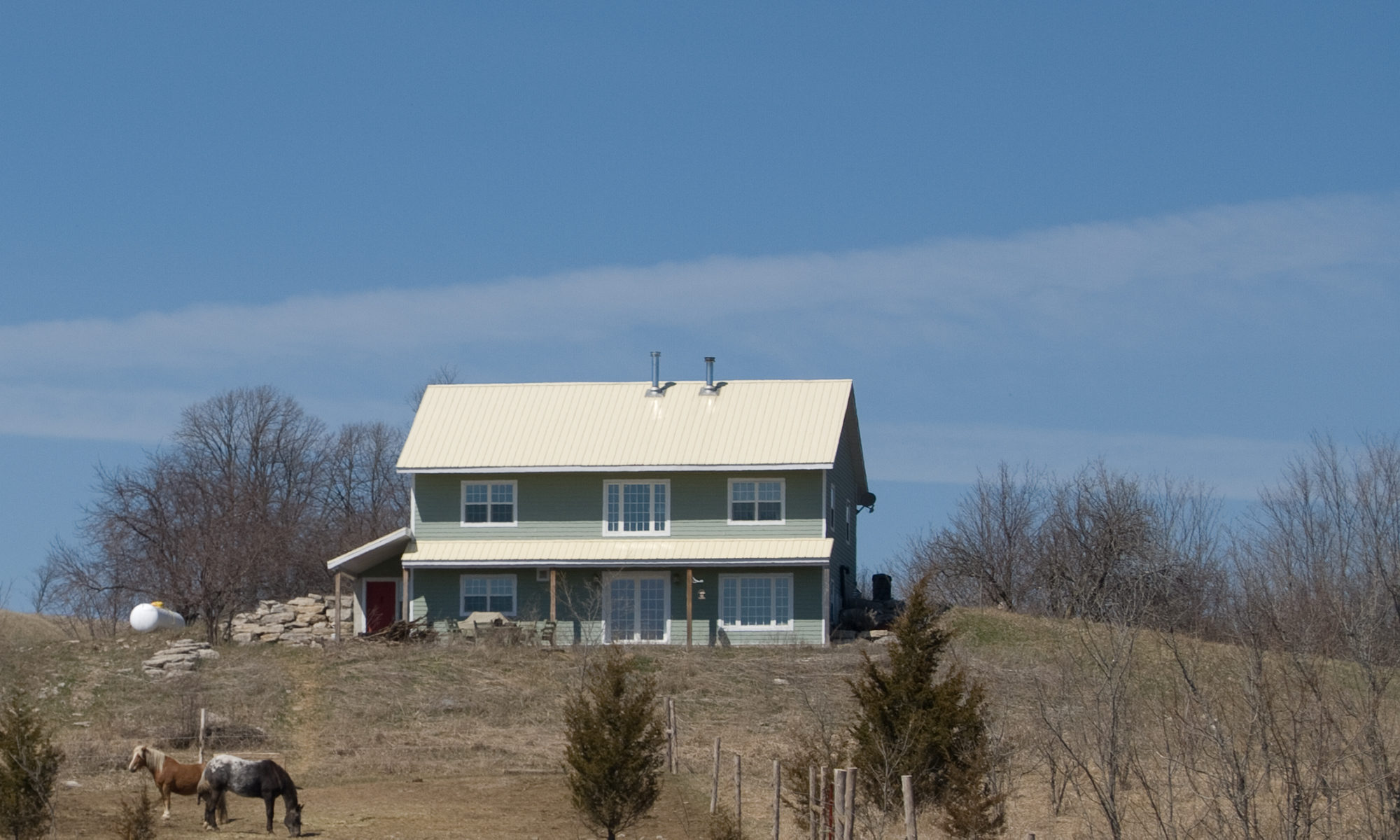Passive solar design is about the orientation of a building and the placement of windows and mass in order to capture the heat from the sun and then to store it in the mass of the building.
One of the first things to consider when designing a house is the orientation to the sun. The long axis of the house should be oriented directly east-west, with one of the long sides of the house pointing south. The south wall should then be designed so that the majority of the windows in the house are on that side and that there is a minimum of windows on the north side. One of the errors that many people make when doing a passive solar design is to have too many south facing windows. In the average house you want no more than 15% of the floor space as windows on the south side of the building. If you have more windows then you are prone to overheating, particularly in the fall and spring. When specifying materials you need to look for a window that has as high a Solar Heat Gain Coefficient (SHGC) as possible if you are in a northerly climate. The SHGC is a number between 0 and 1 that is the portion of the solar heat that is allowed through the window. A window that allowed all the heat through would have a value of 1. Most windows have a value of between 0.3 and 0.6. In addition you want to design overhangs that will shade the windows in the summer and let in as much light as possible during the winter (I will cover this more in depth in a later post)
In addition to the windows you want to have thermal mass in the building. Thermal mass acts like a flywheel for heat. If the sun shines on it, or the air around it is warm, it will store some of the heat, and once the air temperature drops, it will release some of that stored heat to the air. Once again, however, you can have too much of a good thing. If you have too much thermal mass, it can never get above room temperature and will not contribute to heating the house, as in order for a thermal mass to be effective, it has to reach a temperature that is greater than the desired air temperature in the house. This is because heat will always travel from a hot object to a cool object. If the thermal mass is at the desired air temperature, it will only transfer heat to the air when the air temperature is below the desired temperature. Also, with concrete, the most common thermal mass, the active zone is only about 4 inches deep, so there is little to no advantage having a 10 inch thermal mass. A thermal mass will be most effective if it is directly exposed to the sun and is dark in color, as dark colors absorb more heat and light colors reflect the heat.
If the thermal mass is in an exterior wall, it is best if you can insulate on the exterior of the wall and leave the interior exposed to the air. If you insulate the thermal mass on the inside of the house, such as in an Insulated Concrete Form (ICF) the heat will have to travel through the insulation first before it can heat the concrete, resulting in a less effective transfer of heat. In my house I used 4 inches of Roxul Drainboard for the insulation. It has an insulating factor of R4.3 per inch, which is comparable to foam, and it has the advantages of being cheaper, being a more environmentally friendly product and providing a drainage plane for the walls. The only drawback I could see is that it has to be protected from the weather (I used concrete board).
